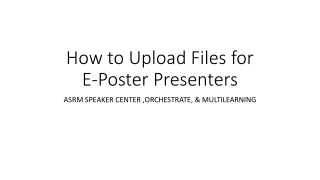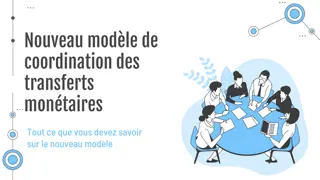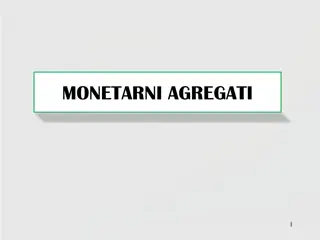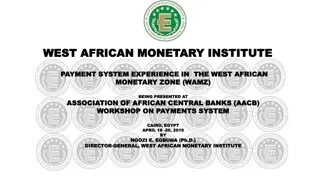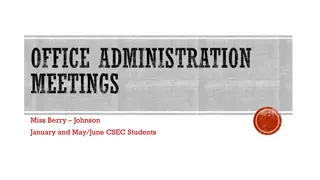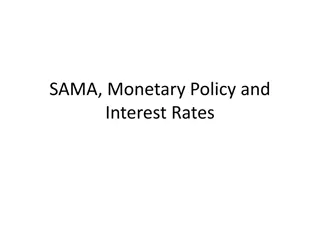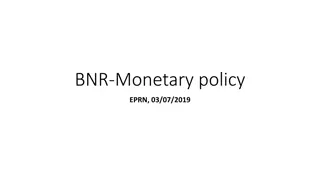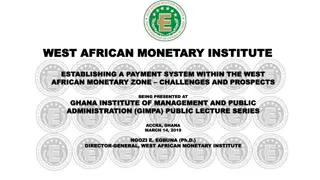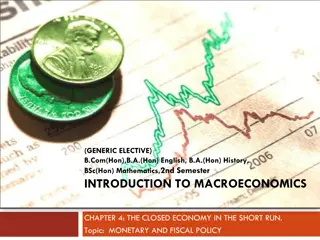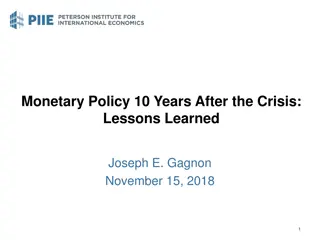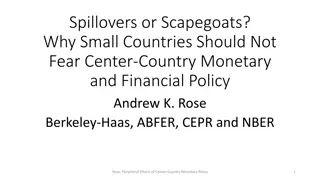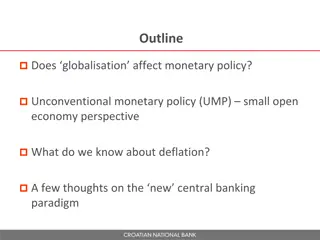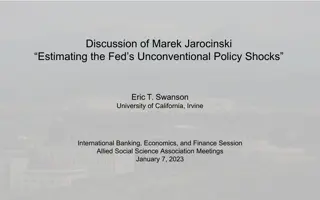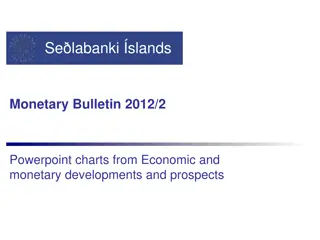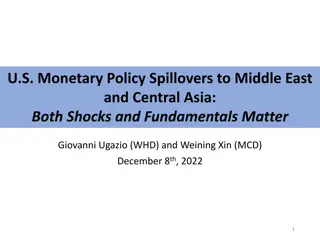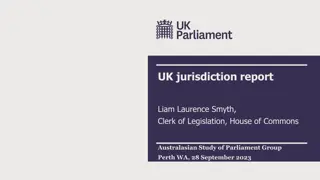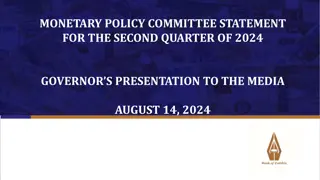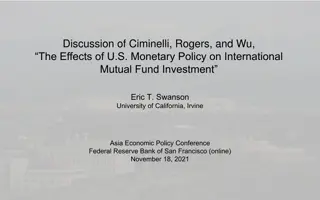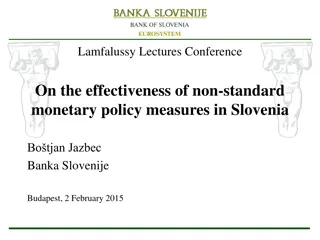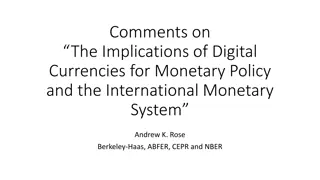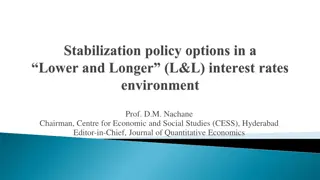Speaker Identification in Monetary Policy Meetings at Sveriges Riksbank
This study focuses on speaker identification in monetary policy meetings at Sveriges Riksbank, using a supervised approach to predict individual board members. By analyzing the anonymized minutes of meetings before June 2007 and known deliberations thereafter, the study aims to understand how increased transparency affects economic policy-making. The research aims to establish a benchmark for classification methods and features to trace the behavior of board members under changing conditions.
Download Presentation

Please find below an Image/Link to download the presentation.
The content on the website is provided AS IS for your information and personal use only. It may not be sold, licensed, or shared on other websites without obtaining consent from the author.If you encounter any issues during the download, it is possible that the publisher has removed the file from their server.
You are allowed to download the files provided on this website for personal or commercial use, subject to the condition that they are used lawfully. All files are the property of their respective owners.
The content on the website is provided AS IS for your information and personal use only. It may not be sold, licensed, or shared on other websites without obtaining consent from the author.
E N D
Presentation Transcript
SweCLARIN activities at LiU Arne J nsson, Lars Ahrenberg, Daniel Holmer
Example of recent activities Analysis of museum descriptions on Pinterest CLARIN 2020 Selected papers Development of a Swedish corpus, SweDN, for training and assessing, abstractive text summarisers CLARIN annual conference 2021 SuperLim 2 Analysis of the SOU 2015:88 "Gestaltad livsmilj : en ny politik f r arkitektur, form och milj " including directives, responses and proposition CLARIN 2022 selected papers Analysis of ISO-certified companies from an innovation perspective CLARIN annual conference 2023
Who said what? Speaker Identification from Anonymous Minutes of Meetings Daniel Holmer, Lars Ahrenberg, Julius Monsen, Arne J nsson Department of Computer and Information Science, Link ping University Mikael Apel, Marianna Blix Grimaldi Sveriges Riksbank & The Swedish National Debt Office
Background The executive board of Sveriges Riksbank (Sweden s Central Bank) hold monetary policy meetings several times a year The main monetary policy objective is to keep inflation low and stable They do this by deciding on policy rates and purchases of financial assets The minutes of the meetings are published Up until June 2007: anonymous deliberations ( data from February 2000) After June 2007: known deliberations (data up to April 2018) How does the increased transparency affect economic policy-making?
This study What would enable us to trace the behaviour of individual board members when the conditions are changed? We try to predict member identities in a supervised setting Different classification methods Different features Try to establish a benchmark for what can be achieved under an unsupervisied condition
Minutes In total there were twelve board members active in the meetings during the time period Six of them present at each time
Classification A fine-tuned BERT-model Accuarcy: 94.81% How to interpret the results?
Feature based classification systems SVM MLP Ensamble system soft voting Ensamble system hybrid
Features Length Order Reservation Sentiments Topic distribution Burrows Delta
Feature: Length Some members tend to use more words than others We extract two features regarding the length: Absolute length Relative length
Feature: Order During the meetings, members often speak in a given order Some (senior) members are likely to start the discussion Others summarize what has been said We extract two groups of features regarding the order: Position of contribuition in the meeting (1 feature) Probability of a member contributing in a given position (6 features)
Feature: Reservation The minutes provide information if a member has entered a reservation against the majority descision of the meeting Some members are more more likely to enter a reservation We extract the probability of each member to make reservation and use it as a feature
Feature: Sentiment We analyze each contribution with a Swedish version of Vader (Hutto and Gilbert, 2014), and the Swedish SenSALDO lexicon Even though the language is formal, we assume that there is a difference in sentiment between the member s contributions The sentiment pipeline provide two groups of sentiment features: A compound sentiment score of the entire contribution (1 feature) The ratio of positive/negative/neutral sentences in the contribution (3 features)
Feature: Topic model A topic model was trained on the public speeches given by the Executive board members. Collected from 1997 2018 Each member have different backgrounds, affliations and areas of expertise We assume that they address roughly the same topics in their public speeches as in the meetings
Feature: Burrows Delta (Burrows, 2002) Selects a set of lexical features to be used for profiling documents and authors Computes the distances between the author models and document models The author model with the shortest distance to a given document is selected as the most likely author
Feature selection 37 features RFE Boruta In general, topics showed to be a strong predictor Other strong predictors: Absolute length of contribution Speaking order in the meeting
Results prediction accuracy BERT has the highest score, ~95% The standalone Burrows Delta system, ~60% Best performing SVM/MLP-based system: Standalone SVM with Boruta feature selection, ~80% Competitive results with only a few features from RFE
Summary We are able to predict the correct member with ~94% accuracy with BERT Hard to interpret In order to try to understand how a member can be predicted, we implemented classification systems with more interpretable features An SVM reached ~80% accuracy on the classification task Topic models of the members public speeches, length of their contributions in the meeting, and speaking order were some of the strongest features We want to use the findings to be able to predict members in the truly anonymous minutes


